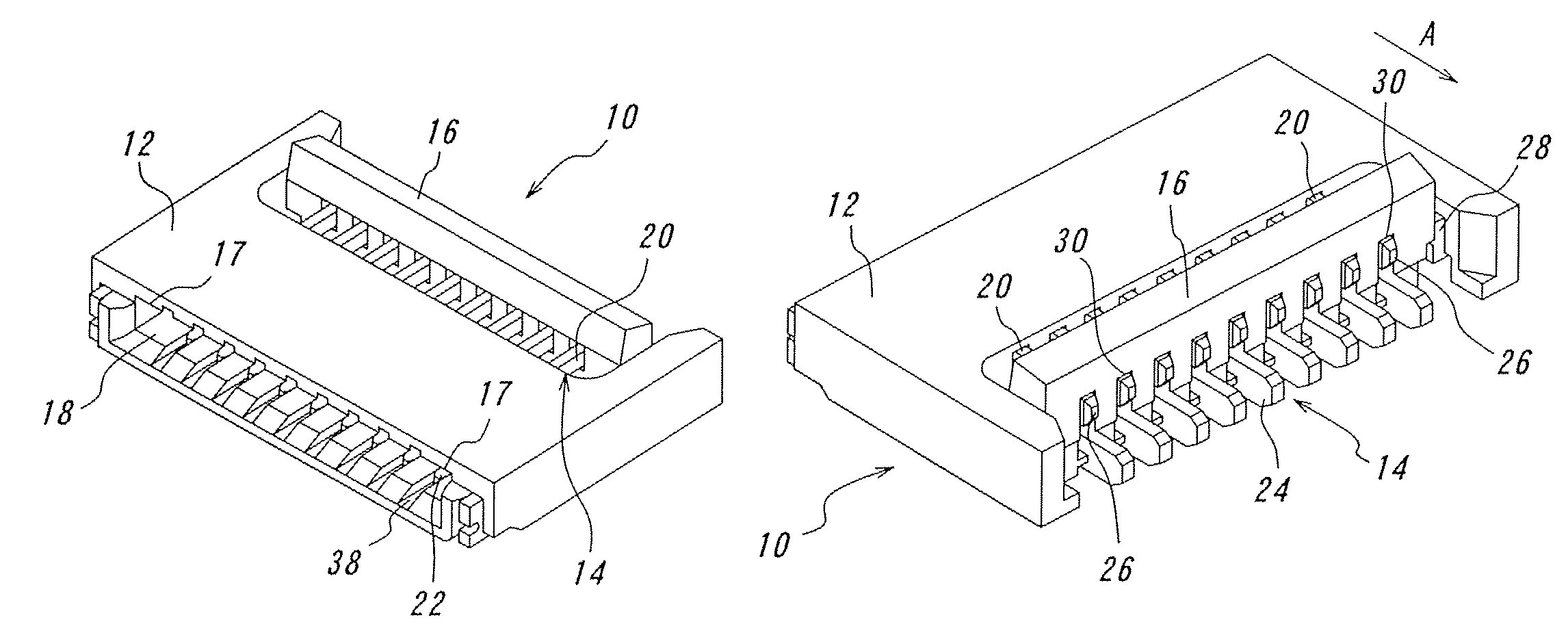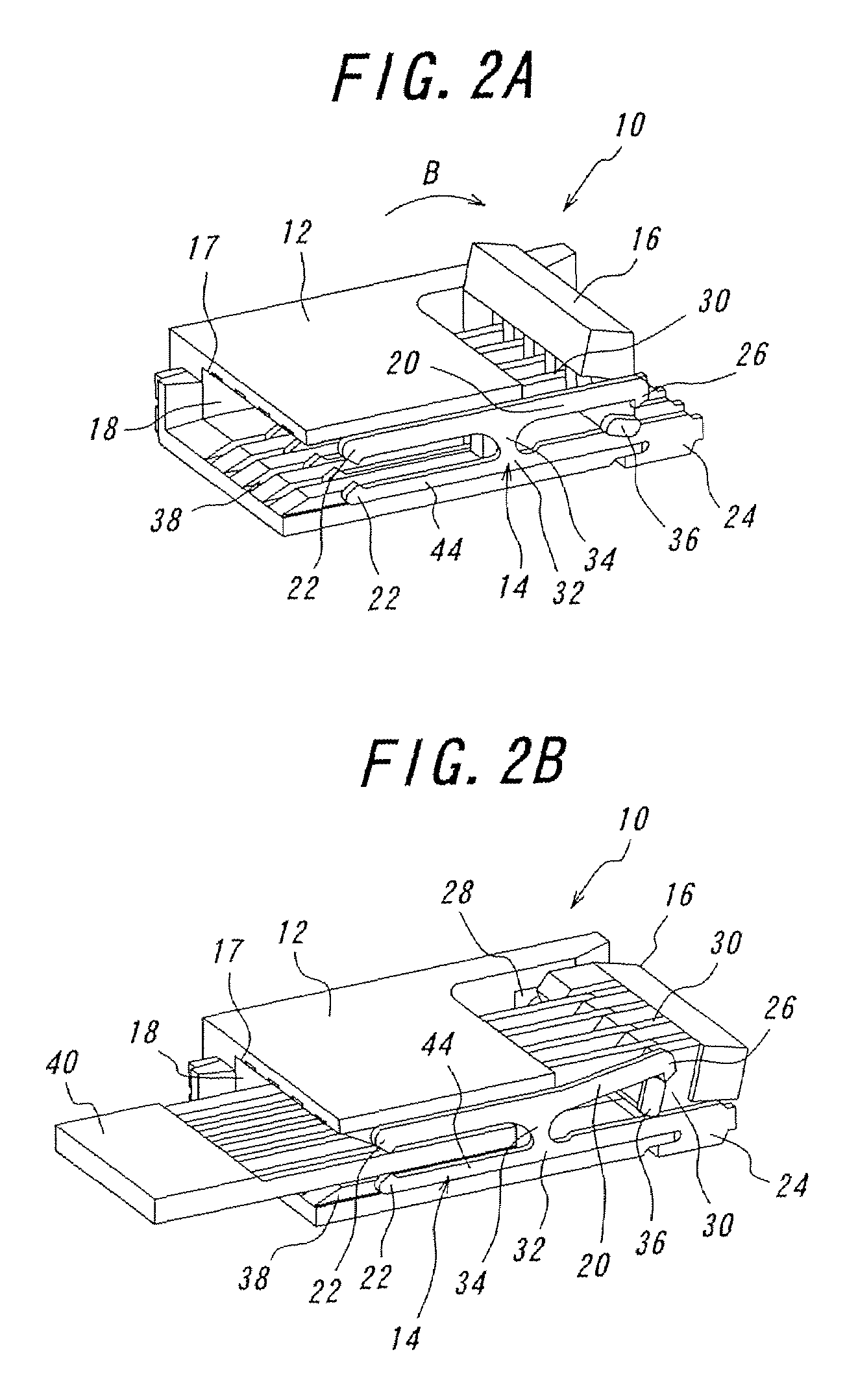Connector
a technology of connecting rods and connectors, applied in the direction of coupling contact members, coupling device connections, coupling parts, etc., can solve the problems of inability to achieve more miniaturization in height, inability to prevent the permanent set in fatigue of springs, undue increase in locking force, etc., to achieve stable connection, reduce overall height of connectors, and reduce the effect of geometry
- Summary
- Abstract
- Description
- Claims
- Application Information
AI Technical Summary
Benefits of technology
Problems solved by technology
Method used
Image
Examples
Embodiment Construction
[0111]One embodiment of the connector according to the invention will be explained with reference to FIGS. 1A to 6D. FIG. 1A is a perspective view of the connector according to the invention with a pivoting member opened viewed from the fitting opening side, and FIG. 1B is the connector shown in FIG. 1A viewed from the connection portion side. FIG. 2A is a sectional perspective view of a connector according to the invention taken along one contact, with the pivoting member opened, and FIG. 2B is a sectional perspective view of the connector according to the invention, taken along one contact, with the pivoting member closed after a flexible printed circuit board being inserted. FIG. 3 is a perspective view of the pivoting member. FIG. 4A is a perspective view of a contact having two contact portions, and FIG. 4B is a perspective view of another contact having one contact portion. FIGS. 5A to 5E are views for explaining movements of the urging portion and the rotational axis when the...
PUM
 Login to View More
Login to View More Abstract
Description
Claims
Application Information
 Login to View More
Login to View More - R&D
- Intellectual Property
- Life Sciences
- Materials
- Tech Scout
- Unparalleled Data Quality
- Higher Quality Content
- 60% Fewer Hallucinations
Browse by: Latest US Patents, China's latest patents, Technical Efficacy Thesaurus, Application Domain, Technology Topic, Popular Technical Reports.
© 2025 PatSnap. All rights reserved.Legal|Privacy policy|Modern Slavery Act Transparency Statement|Sitemap|About US| Contact US: help@patsnap.com



